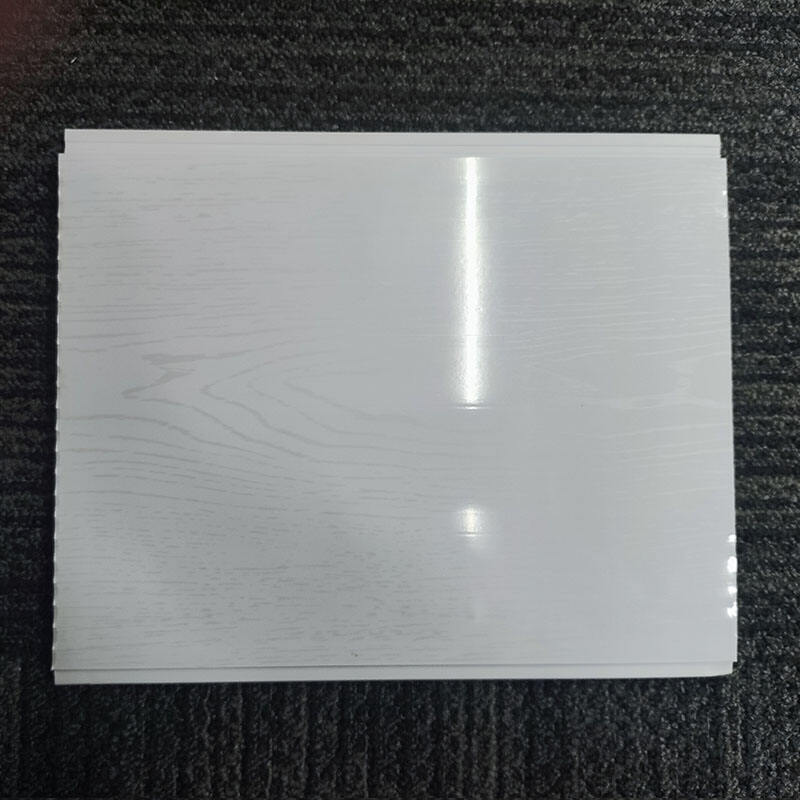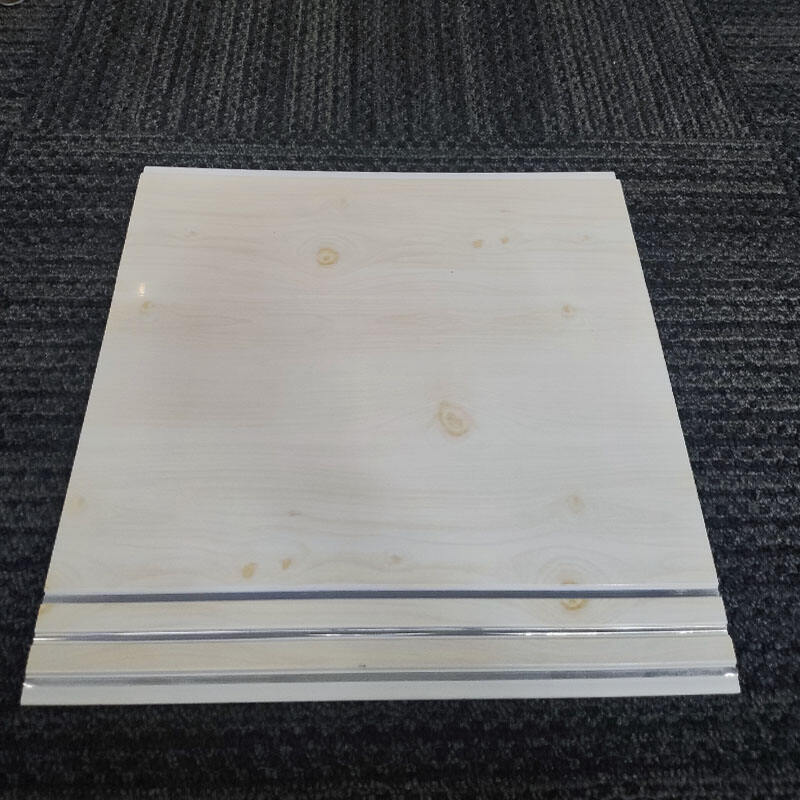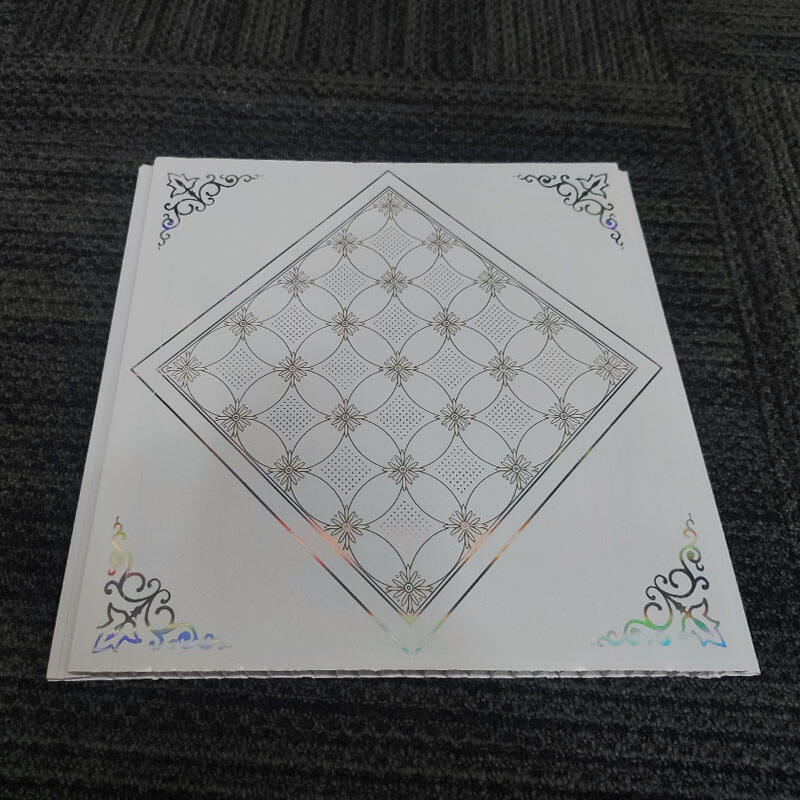Textural Trends in Modern Ceiling Tile Designs
Wood and Metal Accents
Adding wood and metal touches to ceiling tiles creates really interesting contrasts that make interior spaces stand out. Wood brings warmth and personality to commercial areas, working well whether the style is farmhouse chic or ultra-modern. Metal components bring something different to the table though they look sharp and modern, which explains why so many forward-thinking businesses are going this route lately. Looking at what's happening in interior design right now shows just how effective combining these materials can be when designing spaces people actually want to spend time in. Take wood beams paired with metal tiles for example those combinations have been all over the place recently because of how they play off each other visually. According to research from ASID, almost six out of ten design projects last year included both wood and metal somewhere in the mix, showing just how mainstream this approach has become. The fact that this trend keeps growing suggests we're seeing more designers experiment with mixed textures on ceilings, creating spaces that catch the eye while also making offices feel better overall.
3D Wall Panels as Ceiling Features
More people are starting to see 3D wall panels as something other than just walls these days. They bring real depth and interest to spaces where there was none before. We've got all sorts of styles now too - think bold geometric shapes or nature inspired designs that make even boring old ceilings stand out. Take that fancy restaurant downtown that recently redid their whole place. The owners put these panels across the entire dining area ceiling and everyone kept commenting how cool it looked. Just amazing how they changed such a basic space into something really special. What makes them work so well? Lighting plays a big role here. When properly placed lights hit those raised surfaces, they create shadows that dance around the room depending on time of day. For anyone tired of staring at boring white ceilings all day long, these panels offer a fresh alternative without breaking the bank. They let designers play with texture and form while still keeping things functional and beautiful.

Eco-Friendly Materials for Sustainable Ceilings
Recycled and Renewable Resources
These days, sustainability plays a big role when it comes to designing ceiling tiles, especially since so many companies want to cut down on waste. Using stuff like old wood that's been salvaged or plastic that's already been used helps shrink the carbon footprint and actually makes rooms look better too. Take reclaimed wood for instance it gives spaces that warm, aged look that never goes out of style. Recycled plastic options are different though they tend to have that clean, contemporary vibe that works well in office spaces. Research shows buildings constructed with these green materials leave a much smaller mark on the planet compared to traditional methods. Plus, there are certifications like LEED and Green Guard that basically act as stamps of approval for sustainable products, which makes architects and interior designers more likely to pick environmentally friendly options when specifying materials.
WPC Wall Panels for Durability
Wood Plastic Composite (WPC) wall panels are becoming really popular for ceilings these days because they last longer and handle moisture better than many other options. Basically what we're talking about here is a smart material mix of recycled wood bits and plastic, which makes sense for anyone wanting to build sustainably. These panels stick around for years without falling apart, plus they help cut down on waste since we don't have to replace them so often. What's great too is how versatile they look. Homeowners love them just as much as business owners do, whether going for something rough and textured or sleek and smooth. When looking at old school materials such as regular wood or standard drywall, WPC just holds up better overall. Plus, once installed, there's hardly any upkeep needed at all. That combination of strength and low maintenance makes them stand out in today's building world.
Acoustic and Functional Ceiling Solutions
Sound-Absorbing Tile Technologies
Acoustic ceiling tiles really make a difference when it comes to creating spaces people actually enjoy being in. Noise control matters a lot in places like modern office layouts, schools, and hospitals where unwanted sounds can be a major problem. What makes these tiles work so well? They're made from special materials and come in various designs that help soak up sound instead of letting it bounce around everywhere. Take mineral wool tiles for example they've become pretty popular lately because they handle sound so effectively. Some companies have started using modular systems too, which allows for more flexibility in different room configurations. Architects know from experience that good acoustic treatment transforms ordinary spaces into functional ones. When picking out tiles though, remember to think about what the space will actually be used for and how the tiles look alongside other design elements. Practical considerations always need to match up with visual appeal if we want successful interior environments.
Waterproof Options for High-Moisture Areas
Waterproof ceiling tiles work wonders in places where moisture is always hanging around, think bathrooms and kitchens for example. They hold up much better than regular materials when faced with constant dampness and humidity problems. The tech behind good waterproof tiles includes stuff like PVC composites and special coatings that actually stop water from getting through. Contractors installing these tiles notice they stay strong even after years of being exposed to water. Many building experts report that once installed, these tiles save money on repairs down the road since they last so much longer than standard options. Plus, nobody wants to deal with mold growing on their ceilings. Adding waterproof tiles makes sense for both practical reasons and looks great too in spaces where controlling moisture is just part of daily life.
Aesthetic Innovations: Color and Pattern
Geometric and Artistic Patterns
Lately, we've seen a big push toward geometric and artistic ceiling tile patterns in interior design circles. People love them because they work so well with almost any decor style and really stand out without being too much. When installed properly, these patterns completely change the feel of a space, adding layers of depth and visual interest without making things look cluttered. There's actually some science behind why certain patterns affect our mood. Take triangles and squares for example they tend to bring order to a room, making it feel tidier somehow. On the flip side, those flowing, organic shapes create a totally different vibe, almost like walking into an art gallery where everything moves together naturally. Many homeowners report feeling more inspired when surrounded by these kinds of designs.
Take the Grand Plaza Hotel in Chicago for instance. Their lobby underwent a complete transformation when they installed those striking geometric ceiling tiles. The effect was immediate – guests couldn't help but notice the dramatic pattern overhead as they entered. A recent piece from Interior Design Today actually mentioned how top designers see geometric shapes sticking around for quite some time because they just work so well aesthetically. But it's not just about looks. These patterns bring real functionality too. Acoustic panels shaped in geometric forms do double duty by both controlling sound levels and adding visual interest. Even spaces with limited budgets find ways to incorporate smaller geometric elements through wallpaper or simple shelving arrangements. The key seems to be finding the right balance between form and function without going overboard.

Metallic Finishes for Modern Glamour
Metallic finishes on ceilings have become really popular lately, giving spaces that extra bit of class and modern vibe. They just look so good and instantly make rooms feel more valuable while adding that trendy touch everyone wants these days. There's actually quite a range of options available too. Classic choices include gold and silver, but many people are going for bolder colors now like bronze or even rose gold. This versatility means metallic ceilings work well whether someone prefers simple, clean designs or something more luxurious and dramatic. Plus, one thing I've noticed about these finishes is how they play with light. The way they reflect it makes small rooms appear bigger and creates this warm, inviting atmosphere throughout the space.
Spaces featuring metallic finishes tend to command higher perceived value according to market observations, which explains why they work well in homes as well as offices. Looking at what's happening at major interior design shows lately, it's clear that metal accents aren't going away anytime soon. They've moved beyond temporary trends into regular use across contemporary design circles. When applied to decorative ceiling tiles specifically, these metallic touches create a sense of luxury without being over the top. Many designers report clients asking for subtle metallic details that add depth without overwhelming the space.
For further aesthetic enhancements, consider exploring options in 3D wall panels or wpc wall panels to complement the ceiling's metallic designs.
Integrating Lighting with Ceiling Tile Systems
Recessed and LED Lighting Techniques
Good lighting makes all the difference when it comes to ceiling tile design. Combining recessed lights with LED technology gives us a clean look while saving energy at the same time. Beyond just making rooms brighter, these lighting choices actually enhance how we see the ceiling itself. Recessed lighting works great in offices and homes alike since it doesn't take up much space and runs on less power. When designers place lights strategically around certain areas, they highlight interesting shapes and textures in modern ceiling tiles. We've seen amazing results in commercial buildings where recessed lighting runs along those cool 3D wall panels or acoustic panels. The effect adds depth to otherwise flat surfaces and creates a whole new atmosphere in the room without needing fancy decorations.
When lighting gets properly integrated with ceiling tile designs, the results can be truly stunning environments. Look at those modern office spaces where the lights actually complement rather than compete with the architecture. The key here is planning ahead for fixtures that really bring out the beauty in ceiling tiles, especially when they feature cool geometric shapes or artistic patterns. These details make a big difference in how people perceive the size and feel of a room. Industry insiders have been talking about this lighting-design combo as something that's gaining serious traction lately. Designers are finding all sorts of creative ways to incorporate these ideas without sacrificing on energy savings either.
Table of Contents
-
Textural Trends in Modern Ceiling Tile Designs
- Wood and Metal Accents
- 3D Wall Panels as Ceiling Features
- Eco-Friendly Materials for Sustainable Ceilings
- Recycled and Renewable Resources
- WPC Wall Panels for Durability
- Acoustic and Functional Ceiling Solutions
- Sound-Absorbing Tile Technologies
- Waterproof Options for High-Moisture Areas
- Aesthetic Innovations: Color and Pattern
- Geometric and Artistic Patterns
- Metallic Finishes for Modern Glamour
- Integrating Lighting with Ceiling Tile Systems
- Recessed and LED Lighting Techniques

